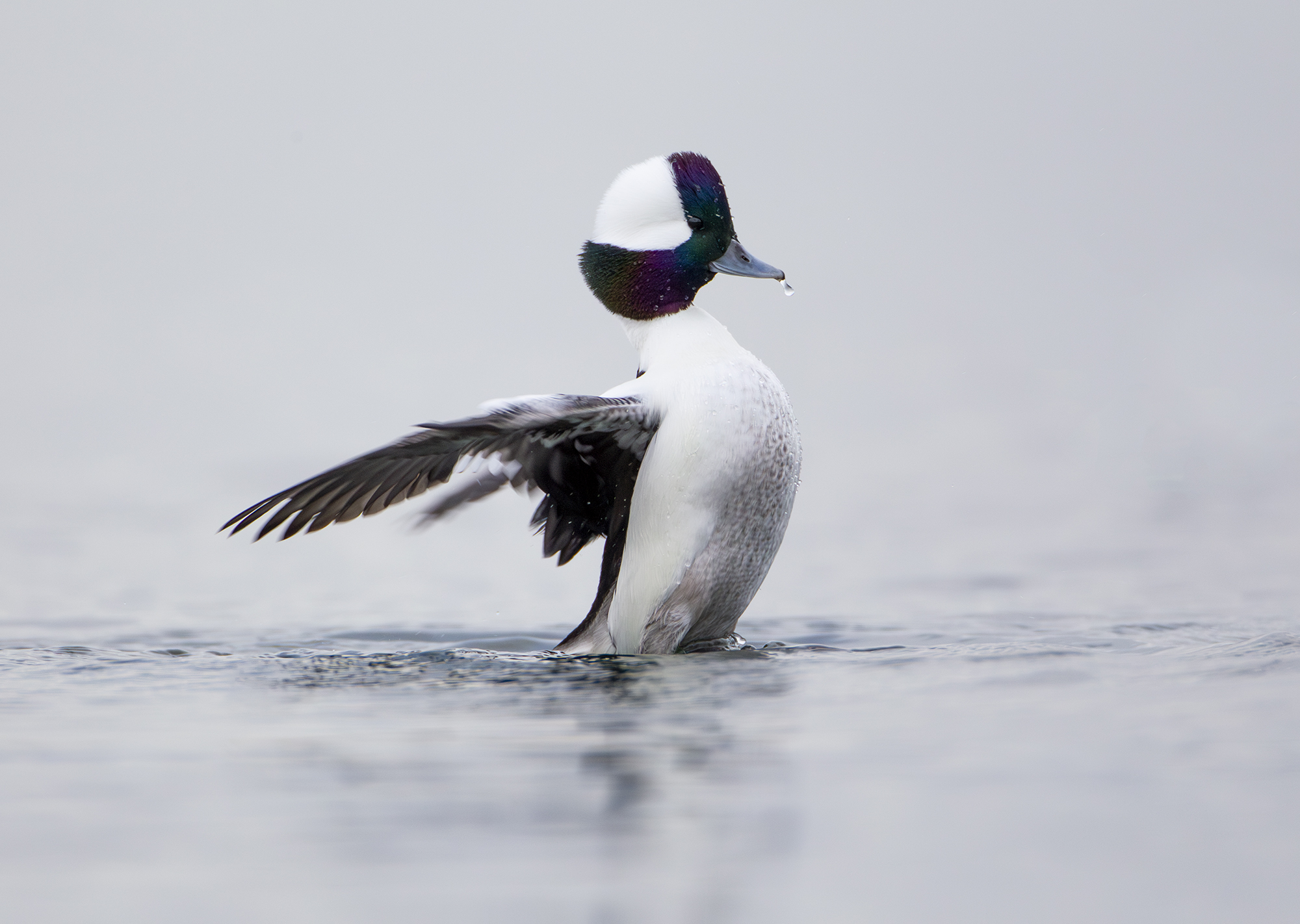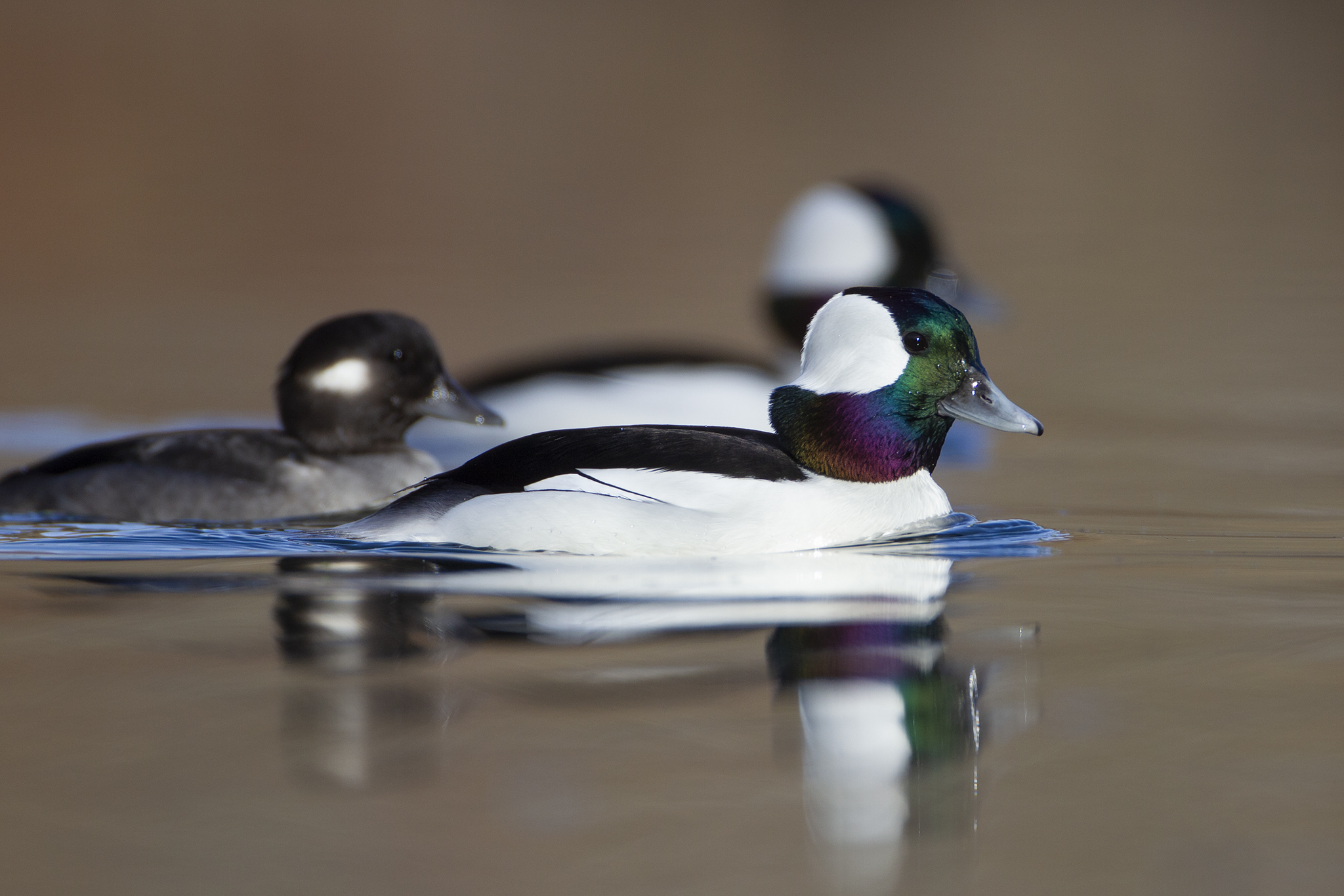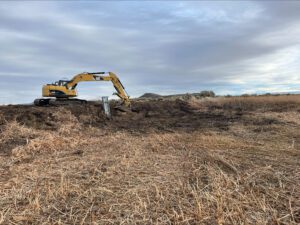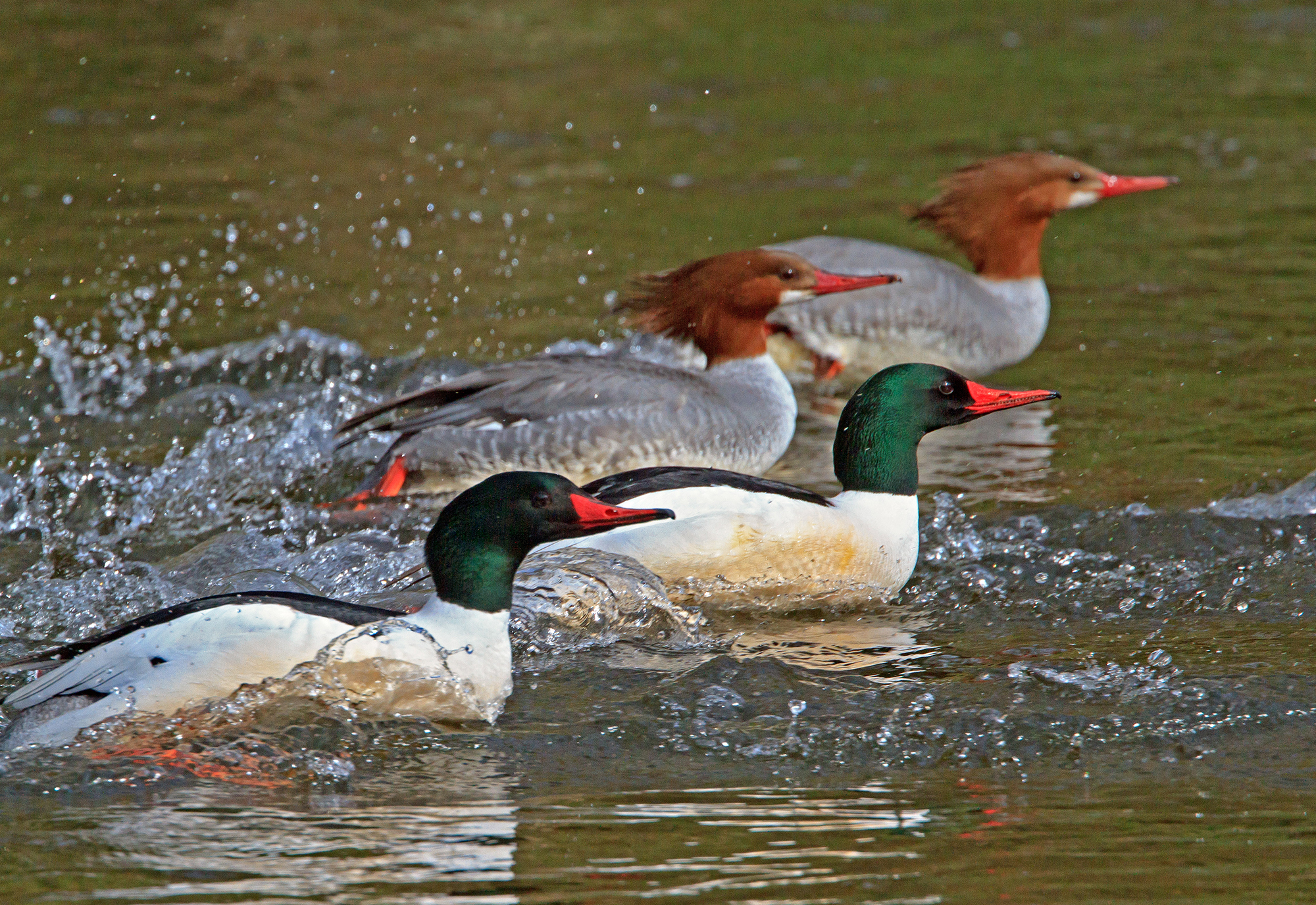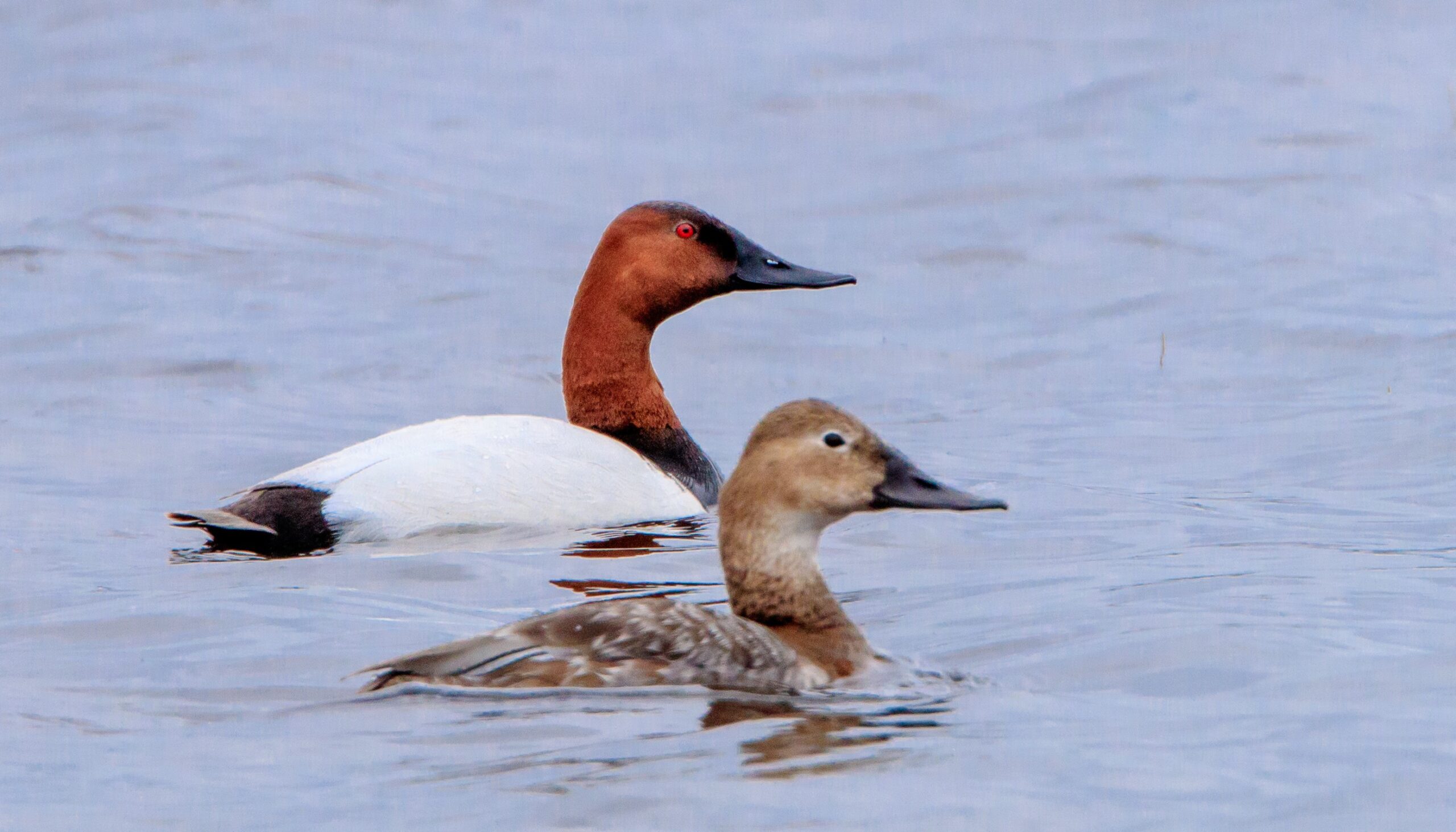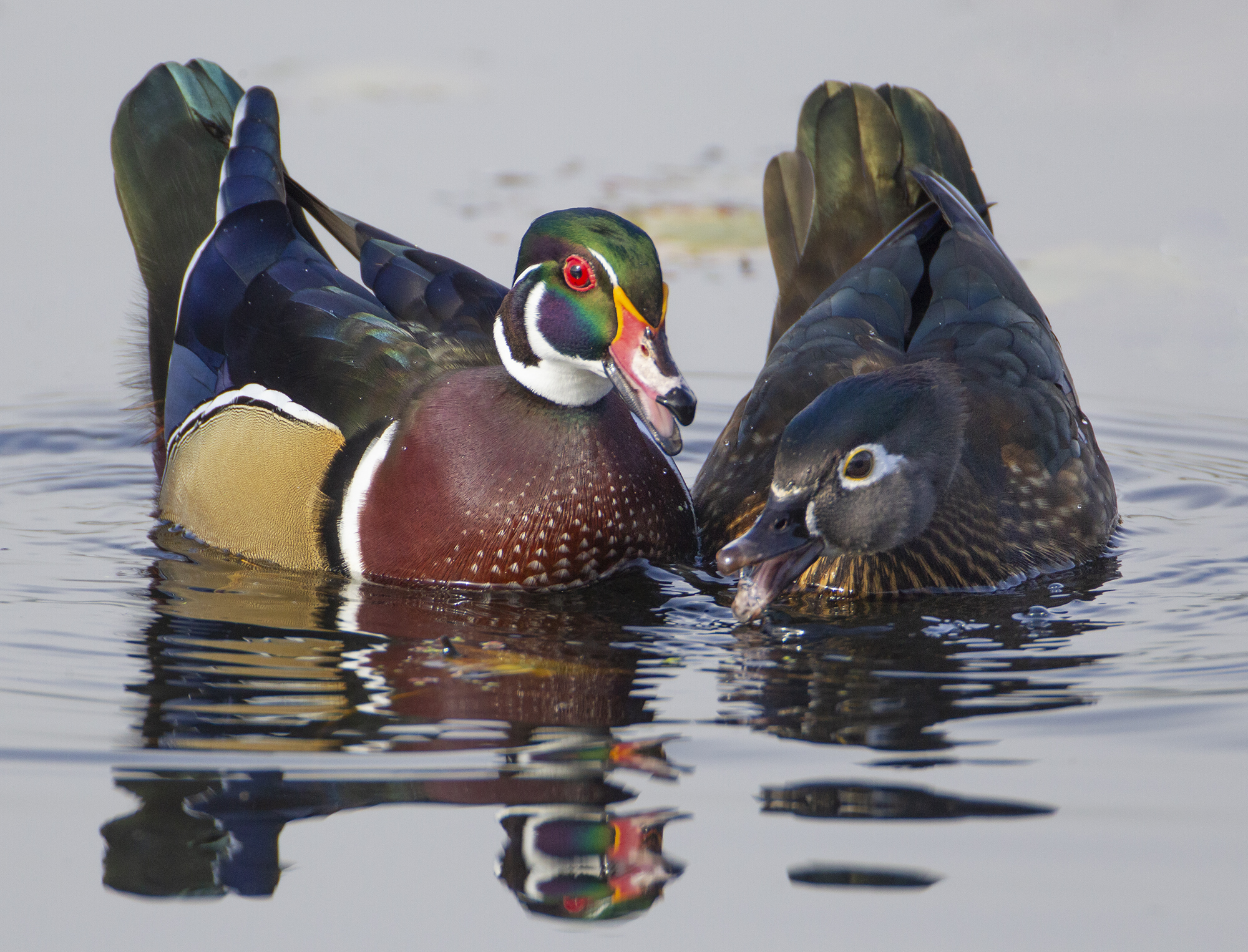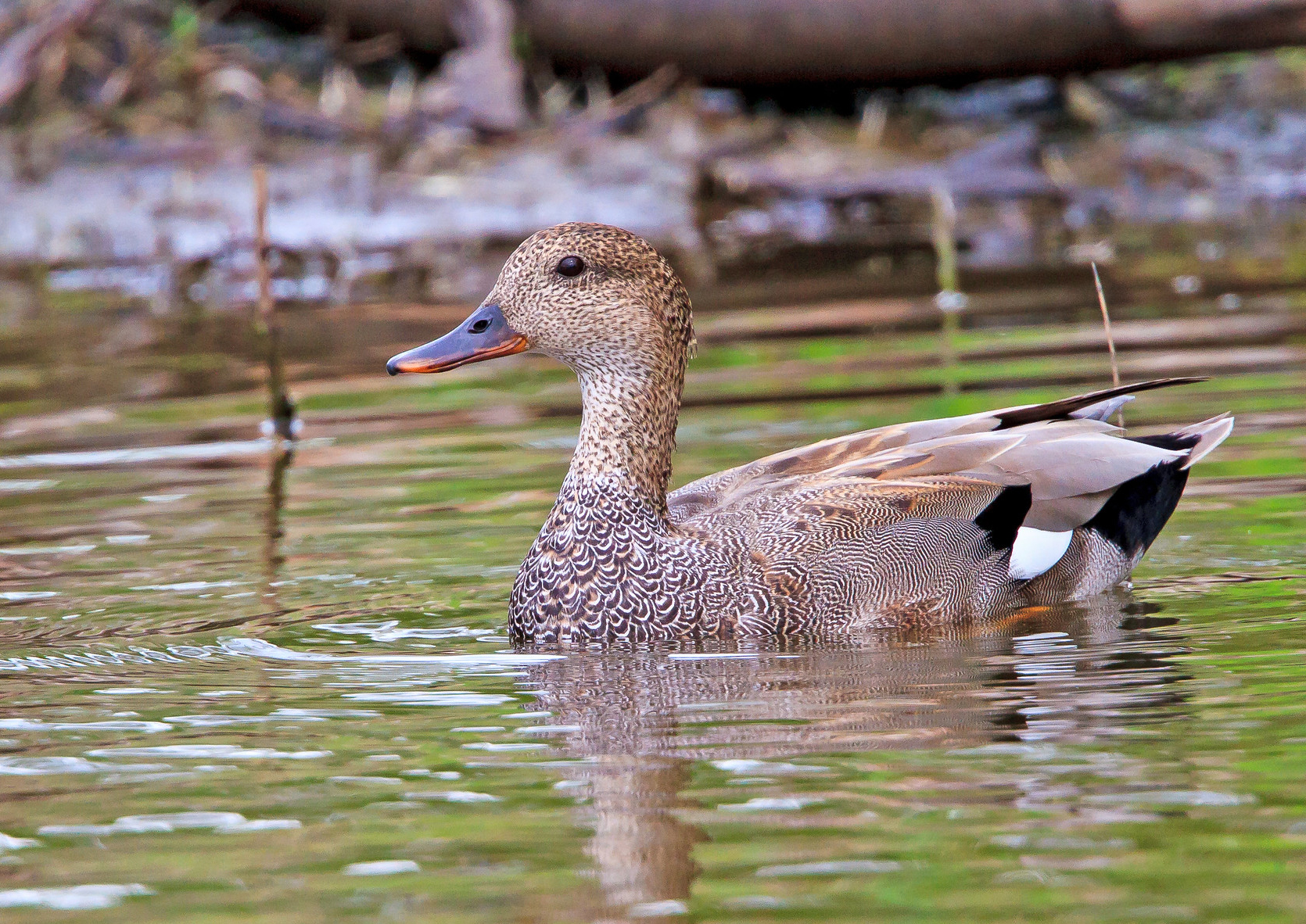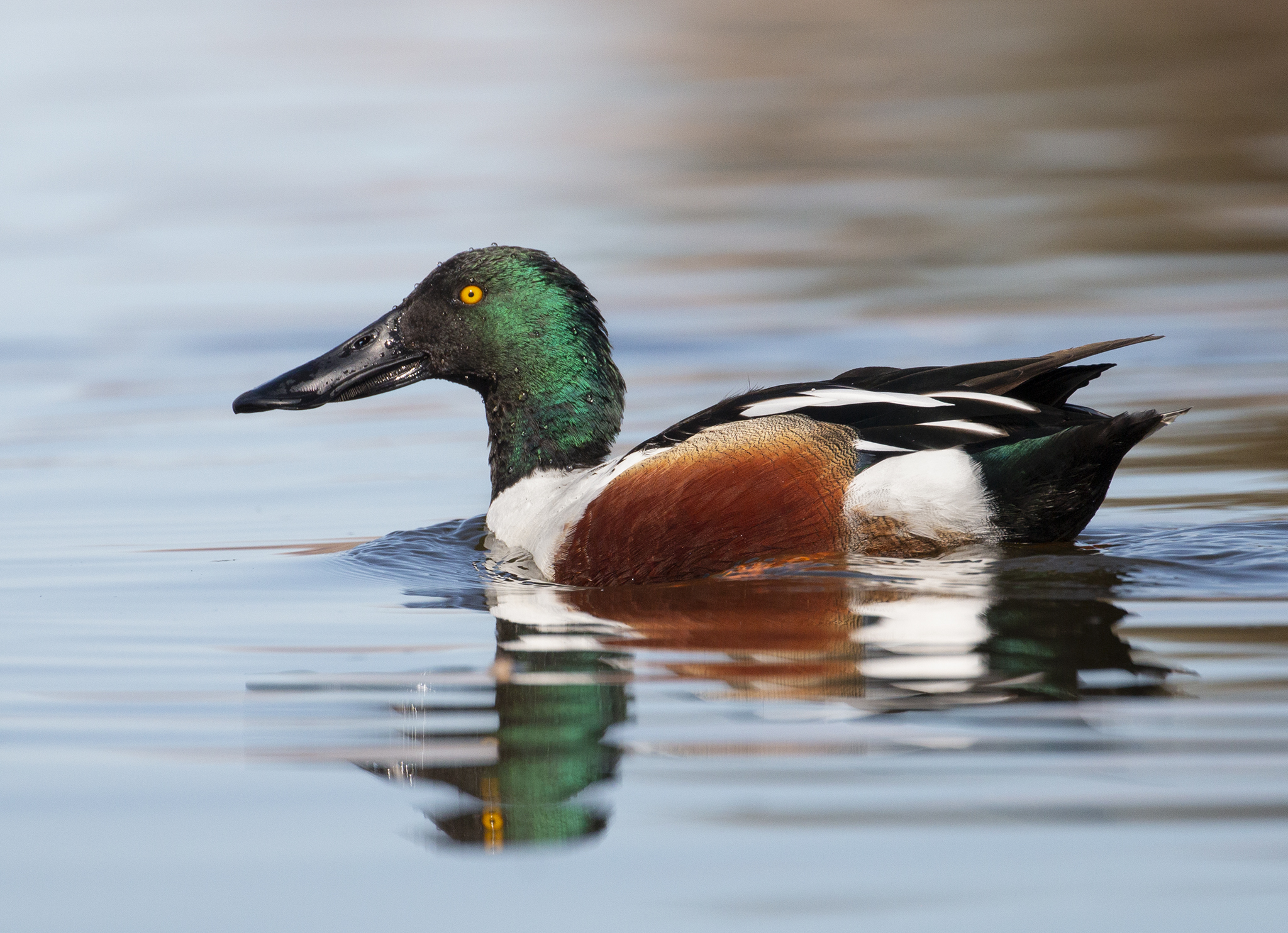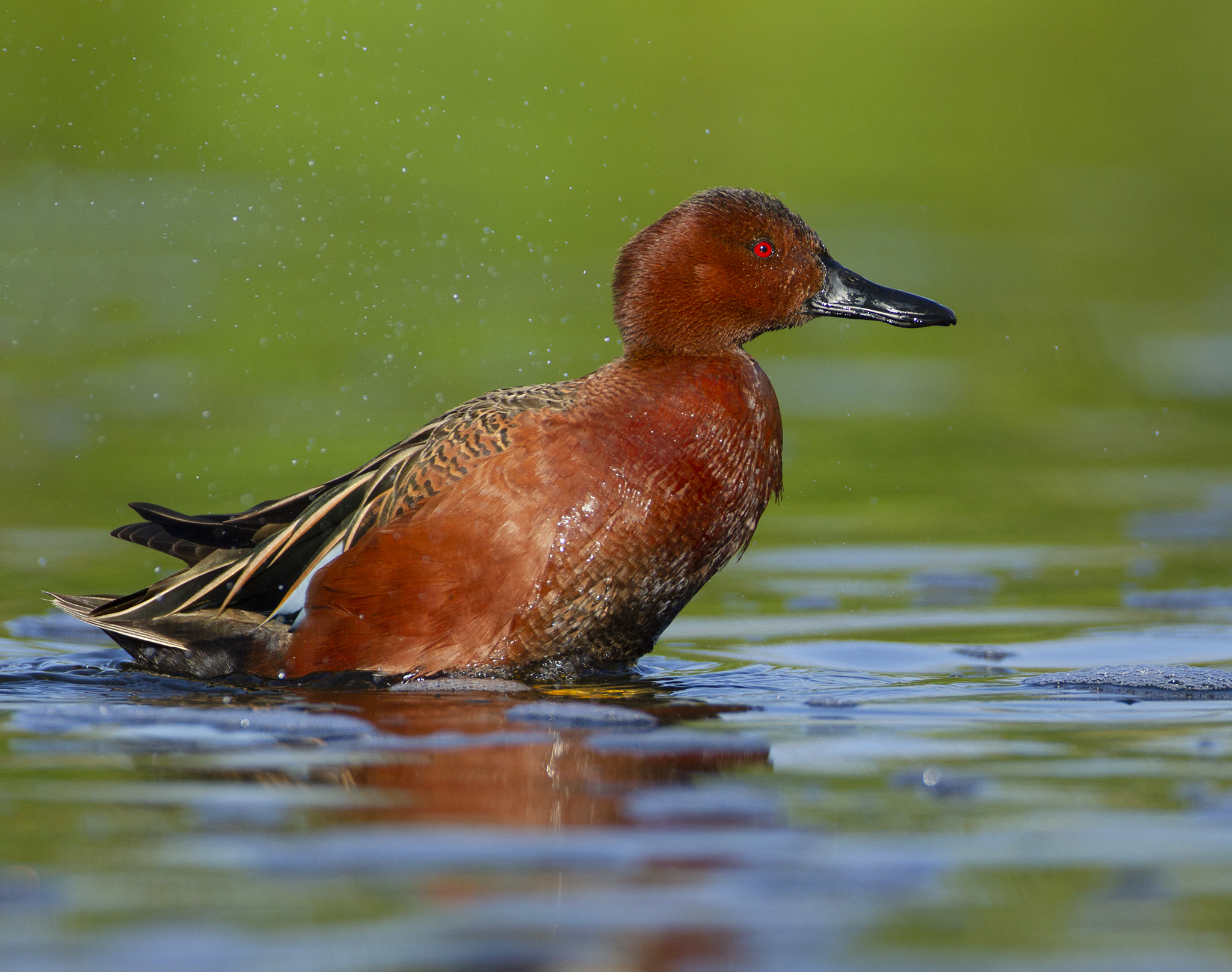Written by Peter Pearsall/Photos by Peter Pearsall
The bufflehead (Bucephala albeola) is one of the smallest diving ducks in North America. The name is short for “buffalo head,” referring to the puffy, rounded head of the male.
While buffleheads are most common at the Refuge during spring and fall migration, they can usually be found in small numbers at open bodies of water through the winter. The male’s plumage is a striking contrast of black-on-white, accented with purplish-green iridescence on the head; females are gray-brown overall with a white patch near the eye.
Buffleheads predominantly breed in the boreal forests of North America, especially in Canada and Alaska, near freshwater lakes and ponds with coniferous woodlands. They are cavity nesters, often using holes made by woodpeckers in trees.
Buffleheads are diving ducks, primarily feeding underwater. Their diet consists of aquatic invertebrates, including insects, mollusks, and crustaceans; small fish (particularly in winter); and sometimes seeds and aquatic vegetation.
In flight, buffleheads are fast and agile, with rapid wingbeats. Unlike most diving ducks which must run across the water’s surface to take flight, buffleheads can launch directly from the water.
In winter, buffleheads migrate to coastal waters, inland lakes, and large ponds, preferring sheltered bays and estuaries. They are less sociable than most ducks, typically seen in pairs or small groups, rarely in large flocks. They can be found across much of the U.S. and parts of northern Mexico during the winter months.
